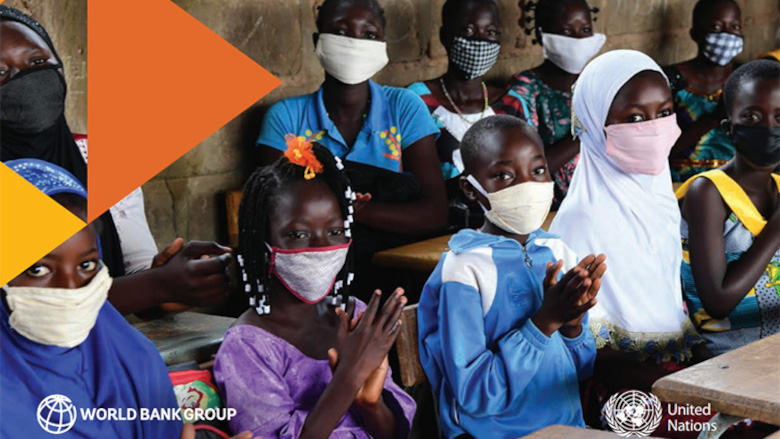Over the last two decades, global FCV dynamics have become more complex. Growth and poverty alleviation are crucial but alone will not suffice to sustain peace and deliver on the 2030 Sustainable Development Goals, as people in FCV-affected countries continue to be left behind. Moreover, the devastating impact of the COVID-19 crisis has pushed an estimated 19 to 30 million additional people into extreme poverty in FCV settings in 2020 alone, while threatening to increase the number of food insecure people to 270 million.
With preexisting vulnerabilities, crisis and conflict affected countries have less capacity to manage the health, economic, and social impacts of COVID-19. The UN and the World Bank Group continue to more effectively combine their comparative advantages, capacity, and expertise, working together across siloes and changing the way both institutions do business.
This 2020 UN-World Bank Partnership Report was jointly developed by the UN and World Bank and aims to provide a snapshot of our joint work on priority themes across the humanitarian-development-peace nexus over the period July 2019 to June 2020: prevention and resilience; COVID-19 response; forced displacement; and food security.
The World Bank and the UN have various modalities of collaboration, including joint efforts where the agencies work in a parallel but coordinated fashion allocating financing from separate sources. In other cases, the World Bank provides the financing with the explicit agreement to engage the UN to leverage their comparative advantage. Examples of collaboration were reported from some 47 countries, including those dealing with different aspects of fragility, conflict, and violence, as well as countries experiencing spillovers and conflict externalities, such as forced displacement.
The examples included in the report are intended to be indicative, and were chosen to illustrate the breadth of regions, contexts, themes, and ways of working.
